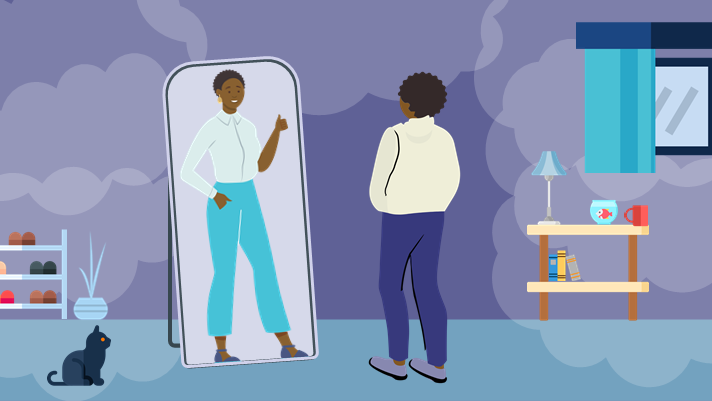Homelessness Among Women and Gender-Diverse People
Story 3: Sondra
Here is one final example of a fictional story of a woman or gender-diverse person at-risk of homelessness.

Meet Sondra
Sondra is a young woman who grew up in foster care. At 16, she left her foster home and moved in with a guy she barely knew. He treated her well at first, told her he loved her and promised to take care of her.

Within months, Sondra had a substance use problem. Her “boyfriend” used coercion to force her into sex work in exchange for clothing, food and drugs. She got help and eventually escaped the situation, but has been in and out homelessness since then.

Sondra deals with depression and suicide ideation as a result of her previous traumatic experiences. She uses substances to cope with PTSD symptoms. She accesses the hospital emergency dept. for mental health support and has been admitted in the past. Each time the hospital has discharged her to the shelter system.

Sondra gets a little money doing sex work. It’s risky but she has no work experience. Sondra has been on a waitlist for supportive housing for a while. She dreams of going to college but most days that future feels impossible. For the time being, Sandra is in survival mode.
Reflection:
Answer:
Sondra dreams of a brighter future …
Which of these scenarios are MORE or LESS likely to happen if Sondra does not receive adequate support?
- Being arrested for solicitation.
- Being arrested for loitering or other nuisance charges
- Getting a job and earning a living wage.
- Being assaulted.
- Getting a spot in supportive housing.
- Experiencing a drug overdose.
- Experiencing chronic homelessness.
There is a fair chance that Sondra will be arrested for solicitation or other charges. She is at risk of violence through sex work or navigating the challenges of street life. There are many risks associated with substance use especially if Sondra is not able to access clean equipment and drugs that are not contaminated. A spot may eventually open up in supportive housing. Unfortunately, many people who are chronically homelessness, had their first experiences of homelessness early in life.
Bottom line:
Some groups have an increased risk of homelessness including women and gender diverse people, Black and Indigenous women and girls, people with disabilities and mental health issues, single mothers and newcomers.
Among young people, there is also a greater risk of homelessness for those with involvement in child welfare or youth justice. Early intervention and diversion programs support people who are at risk or experiencing homelessness and help stabilize housing quickly.
